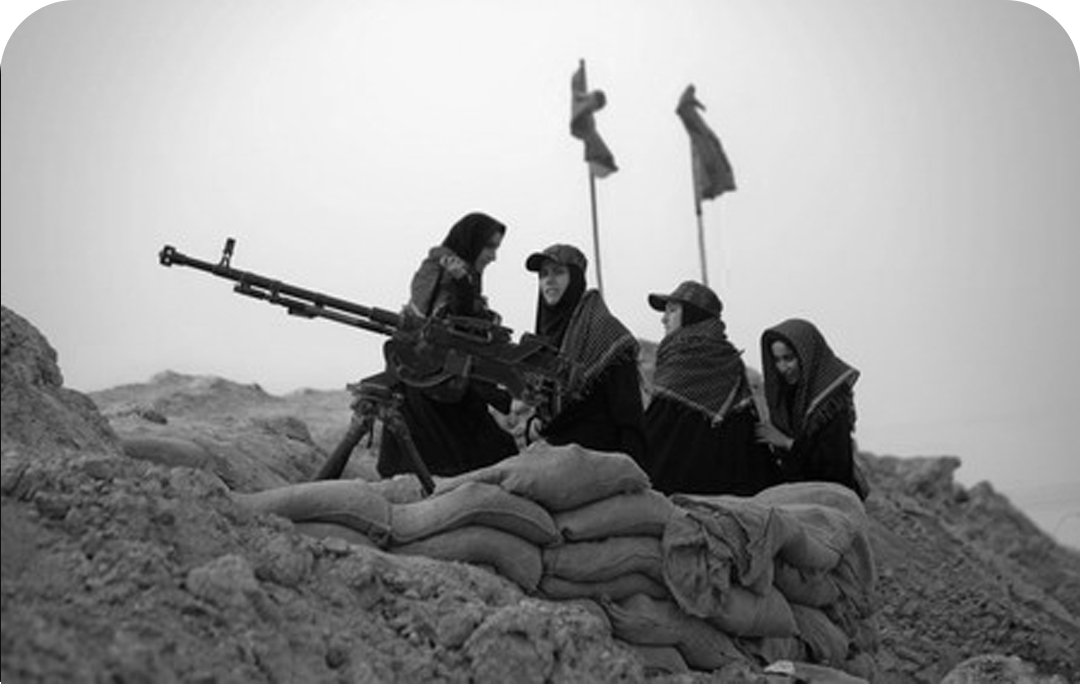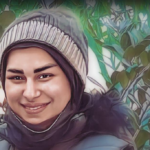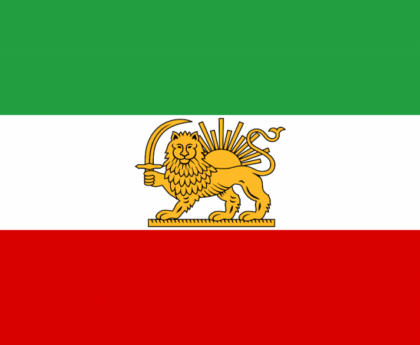Narrative of the Islamic Republic of Iran about the eight years of Iran-Iraq war is a man’s narrative. Iranian women fought on the fronts in some cases. According to the statistics of Shahid Foundation, the number of women killed in the Iran-Iraq war is 6,428.
Some 500 Iranian women reportedly fought as combatants during the war. Official figures cited by Iranian media say nearly 25,000 female doctors, nurses, and aid workers also served on the front lines.
Many Iranian women who lived in the battle zones also are reported to have been subjected to violence by the invading Iraqi forces, including rape. 170 were taken prisoners of war by Iraq. In addition, hundreds of thousands of women lost their husbands and children in the war.
However the share of women from the alleys and streets that are usually called “martyrs” is insignificant. glorious and glamorous historical narratives of the Iran-Iraq eight-year war were written only for men. Women in the war have been silenced and marginalized so much that there is not much news about their struggles in the state media, literature and cinema of the holy defense.
Simin, a wartime nurse, told BBC Farsi: “I was humiliated during the war and in war zones. The society was not very supportive of us. I think it is disrespectful for them to say that women also played a role in the war. Because they generally see the place of women in the home”.
Mateo Farzaneh wrote a book Iranian Women and Gender in the Iran-Iraq War
Despite their significant contributions, women are largely absent from studies on the war. Drawing upon primary sources such as memoirs, wills, interviews, print media coverage, and oral histories, Farzaneh chronicles in copious detail women’s participation on the battlefield, in the household, and everywhere in between.
Mateo Farzaneh was recently visiting the Iranian city of Khorramshahr, a border city that put up a battle against Iraqi forces in 1980 during the Iran-Iraq War. The city fended off troops for 34 days before the Iraqis finally occupied it. Inside a mosque that is famous for its resistance to the foreign occupation, Farzaneh noticed an oversight.
“I walked in and I saw a ton of portraits of men as being the martyrs and people that sacrifice everything. But there was not a single photograph of women,” Farzaneh told KGOU’s World Views.
“They want to be identified not as a superior beings to their male counterparts but actually as equals: People that did the same amount of work suffered the same way if not worse, but did not get recognized for it,” Farzaneh said.
Some women have already told their wartime stories, like Zahra Hosseini, the author of One Woman’s War: Da (Mother). Hosseini was a 17 year old living in Khorramshahr when the war broke out.
“She did everything from washing dead bodies, to burying people, to shooting dogs that were after the bodies that were left around the cemetery because it was so many people and nobody was there to bury them, to transferring patients, to actually picking up a gun and shooting, to actually transferring ammunition from one depot to another,” Farzaneh said. Hosseini’s memoir has become one of the of the top-selling books of all time in Iran, according to Farzaneh.
“Zahra Hosseini was protecting her city, her Khorramshahr in essence,” Farzaneh said. “She talks about how she’s doing this for the love of God and for the love of her religion. But at the same time she loves every inch of her streets, every inch of her land she says, and that’s very, very important to her. So you have a sort of a secular nationalist thing going on inside the minds of these people such as Zahra Hosseini.”
Not all the Iranian women who were involved in the war came from poor backgrounds. A few were educated at Western universities and served as battlefield surgeons, nurses and anesthesiologists. Other worked with the corps of engineers.
“They might not have had the idea of religious sort of impetus that everybody else used, but they did it for the love of the country,” Farnazeh said.
In many war images promoted by Iran’s conservative clerical establishment, women have been projected in traditional roles — cooking or knitting for soldiers, saying farewell to male relatives dispatched to battle, or appearing on state TV to express content over “the martyrdom” of their sons and husbands.
the head of Iran’s state Foundation for the Preservation of Sacred Defense Works and Values has admitted that the role of women during the war has been “ignored.”
Numerous squares, highways, streets, bridges, murals, and other public sites have been named after the estimated 200,000 Iranian soldiers killed during the war. But the number of sites devoted to female war victims is negligible.
The reformist Shargh daily has quoted an unnamed municipal employee in Tehran as saying that out of 18,000 streets in the Iranian capital, only five are named after female war victims. All are alleyways or dead-end streets.
Iran’s first female war photographer, Maryam Kazemzadeh, captured horrific images from the war.
Kazemzadeh complained at a 2018 Tehran seminar on women and war that there hasn’t been any professional research or recognition of female war victims.
“Our women stood with our men and resisted,” Kazemzadeh said, adding that some realities of the war remained untold.
“In 1986, in Bostan [in the southwestern Khuzestan Province], Iraqis raped women and killed them. In some areas, memorials were created for those women with signs that said they will be remembered. I went there to prepare a report. When my photos were published in Today’s Woman magazine, we were pressured,” she said,
Kazemzadeh also noted that all the memorials she’d documented were later removed from that area “as if it was a shameful stain on the country.”
They witnessed disrespect and discrimination for not knowing the Persian language, having an ethnic identity different from the majority and speaking Arabic (which was the language of the enemy that day). In some cases, they were even marginalized in many cities and called “war-stricken”. They became isolated and lived in exile in their own country.
Photographers: Mohammad Sayad, Unknown, Mahmoud Farnoud, Saifullah Samadian Saeed Sadeghi, Hoshang Salehipour Sasan Moidi
Source: fararu.com, bbc, radio farda





